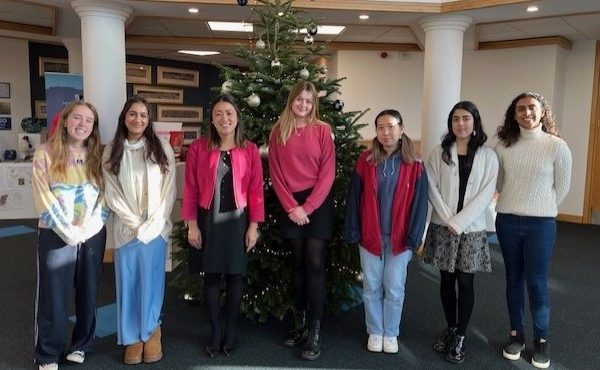Why focusing on grades is a barrier to learning?
It is hard to believe that we have only been back from half term for a week. As one of my colleagues and I were remarking yesterday, term times at school do not ramp up or wind down: they just start at 100mph and continue at that pace until we hit a complete halt for the holidays. With only six weeks until the end of term and the academic year, there is plenty to cram in. Everyone is working hard planning all the activities, events and trips that will take place before we break up on Friday, 12 July.
However there has been a noticeable level of focus and a quieter atmosphere in school than usual this week. Our Year 11 and Year 13 students, who are more than halfway through their GCSE and A Level examinations, respectively, contribute to this change. Meanwhile Years 7, 8, 9 and 10 are receiving and digesting the outcomes of their summer internal assessments; this process has naturally led to increased stress, anxiety and fear of failure.
Our pupils are understandably very keen to do their best. This situation reminds me of the findings from the annual PISA study of 2018 which noted that “In almost every education system, girls expressed greater fear of failure than boys, even when they outperformed boys by a large margin, and this gender gap was considerably wider amongst top-performing students. With regards to the UK, the gap between boys and girls was one of the most pronounced. In fact, female students in the UK have the 5th highest fear of failure out of the 79 countries covered in the report.”
It is not failure that students fear. It is the perceived negative consequences that follow the failure that stresses them out. This type of fear can lead to lowered self-esteem, avoidance of challenging tasks, being pessimistic and even cheating. This chimes with our high achieving students at Northampton High who often face high pressure that may be linked to perfectionism as well as fear of failure. As part of our educational goals, we have made it one of our explicit aims to help reduce this fear and I am sure you will be reinforcing the view at home that these are diagnostic assessments, aiming to show us (and our students) what they know, understand and can do, with the aim of identifying gaps in knowledge and areas where skills need to be developed.
Why does this matter? What is wrong with students judging their performance against others? The deep-rooted problem lies in the belief that intelligence is fixed and that education should focus primarily on accelerating the progress of the gifted and supporting the less able. The mere assignment of a letter or number grade can impede the learning process and students are steered to have a fixed view of their intelligence and potential. Furthermore, it can be argued that grades tend not to recognise improvement over time, so they make ability seem fixed rather than due to effort to learn.
As a school we work very hard to encourage learning without limits for continual improvement, avoiding a narrow focus on artificial barriers. Written and verbal feedback about learning rather than grades is central to our approach. This strategy builds intrinsic motivation to approach new learning in a very powerful way. As such the alternative to grading of course is to give students informative feedback. For example, ‘medal and mission’ feedback and clarity about goals can be effective to maximise the rate of learning. This means students need to know what they have done well (a medal) and what they need to improve (a mission).
More importantly, we wish to encourage our students to understand the link between fear of failure and mindsets. Excessive worry about potential failure can lead to students being so risk-averse and overly cautious, preventing them from embracing challenges and intellectual risks, and engaging in divergent thinking. This is a hallmark of a fixed mindset, which can severely limit opportunities for learning. This is why developing and fostering a growth mindset is so important as it acts as a positive multiplier effect that improves various aspects of a student’s educational experience. Students learn most by taking risks outside of their comfort zone.
Additionally, by helping students learn about the causes and consequences of fear of failure, as well as proactively teaching them how to manage their emotions, we can help improve their self-regulation and resilience, and develop healthy motivators towards their success.
Our educational philosophy and teaching staff are committed to creating an environment free from limiting beliefs about fixed abilities and predetermined futures. Consequently, we avoid a relentless focus on high stakes testing, which can so easily limit notions of what education is for. Over the years, we have supported our students by believing in their capabilities to learn and succeed, encouraging them to surprise us – and themselves – with what they can achieve through a richly creative, broad and balanced curriculum. This philosophy is underpinned by our High School’s approach of Learn, Reach and Coach. As a result, our teaching staff can focus their energy on planning high quality learning experiences that ignite our pupils’ imaginations and curiosity.
Furthermore, our adaptive teaching model provides choices of tasks within lessons and students make decisions about how much challenge they can attempt. Students are therefore guided by their individual interests and are led to those things that are valuable and meaningful to them personally. The result of this learning process is the development of competence, self-confidence and mastery. As competence increases, it boosts confidence, which in turn inspires students to tackle subsequent challenges and be pushed to take risks. This positive cycle continually reinforces itself, cultivating a lifelong quest for learning.
While academic grades can provide a measure of progress, we understand that most parents are more concerned with whether their children feel understood, valued and inspired. Parents want to know their children are happy, resilient, and passionate about learning for its own sake, and that they are making progress. Ultimately, we believe we guide and support our students more effectively by helping them discover their inner sources of motivation to grow and learn at school. It is important to me that Northampton High School is recognised as a place where girls are encouraged to believe in themselves, define success on their own terms, and gain self-esteem, self-knowledge and confidence as they progress through the school.
Dr May Lee
Head




